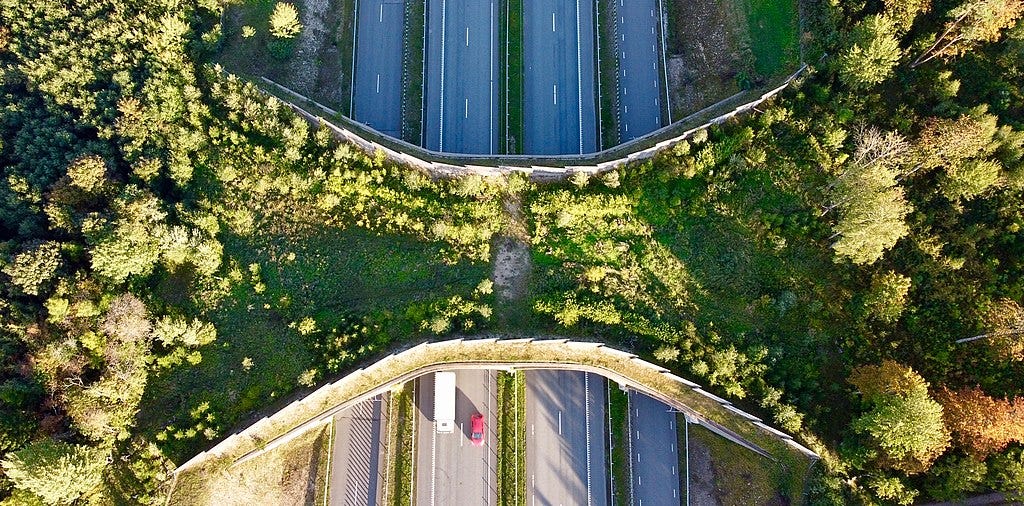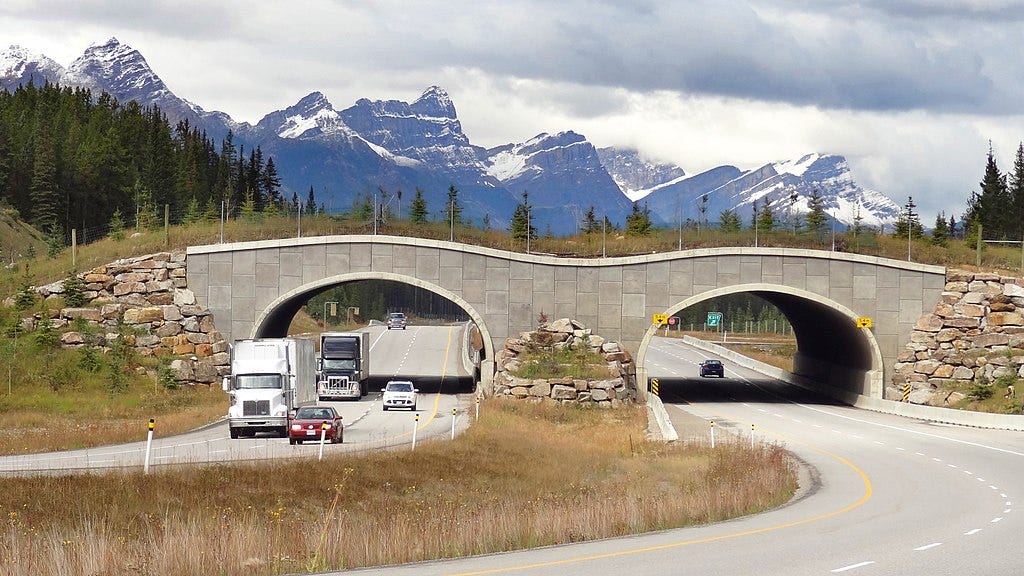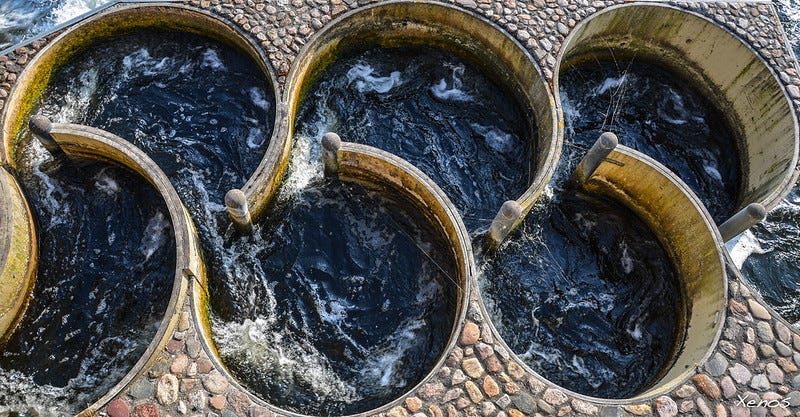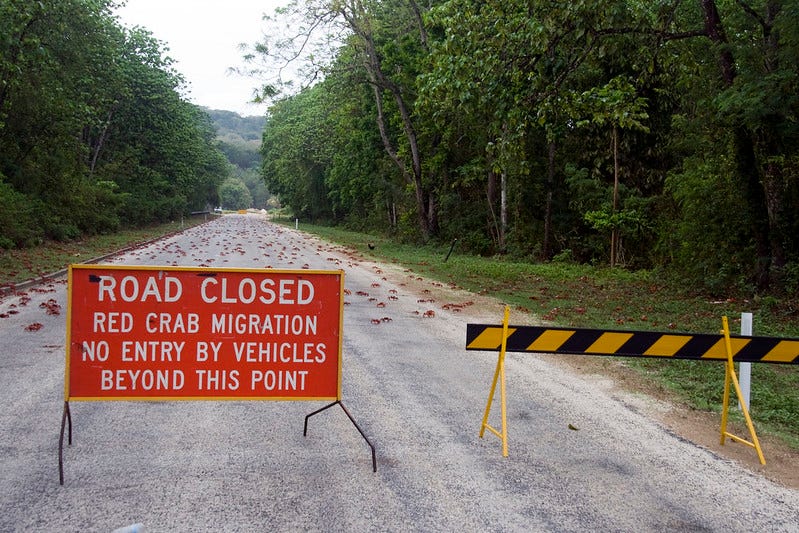Solutions to habitat fragmentation
How can we help animals to move between habitats that have been separated by human activities?

As the world’s population grows, human activities are encroaching on areas that were formerly the exclusive domain of wild animals. Everything from tropical rainforests to deserts are being impacted by agriculture, cities, roads and other infrastructure. Over the past 20 years, the proportion of the world’s surface that is wilderness has declined from around 33% to 23%. As a result, the number and diversity of wild species is declining. Between them, humans and their livestock now represent over 95% of all mammal biomass on the planet.1 That’s right: the combined biomass of all wild mammals is less than 5% of the total.
The decline in the total area of wilderness isn’t the only problem: humans are reducing the size of habitats by fragmenting them. For example, if a species is unable to cross a new motorway or railway that cuts through the area where it lives, its habitat may shrink by half, even if the area of wilderness lost is only relatively small. For top predators, which typically need very large areas to have access to enough prey, this fragmentation can be catastrophic.
Human infrastructure also gets in the way of the millions of animals that migrate back and forth between summer and winter habitats. If they are unable to complete this journey, populations can die out, regardless of whether their summer and winter habitats remain intact.
Naturally, the first aim when building new infrastructure should always be to avoid fragmenting valuable habitats and disrupting migration. In many cases, locations and routes can be found that don’t interfere with vulnerable species and their habitats, but sometimes impacts are inevitable. In this post I will look at some of the things that are being done to mitigate negative impacts by improving connectivity between habitats.
Connecting fragmented habitats
The aim of mitigations is generally to make it is as easy and safe as possible for species to move between the various parts of the fragmented habitat. This is often done using “fauna crossings” such as underpasses and overpasses, combined with fences and other structures to direct the animals towards the crossings.
In Australia, culverts that allow water to pass below roads are being upgraded with log bridges (which go above the floor of the culvert, but below the road) so that koalas and other small animals such as goannas and possums can use them without getting wet.2 Using existing infrastructure like this has the benefit of being relatively cheap and easy to implement.
As traffic on the Trans-Canada Highway through Banff National Park increased, so did the number of collisions between cars and animals. In 1996, two wildlife overpasses were built to address this issue, followed by a further forty over- and underpasses. Elsewhere, fences were put up to keep the animals off the road. Those using the crossings include deer, elk, lynx, coyotes, wolves, wolverines and bears. For some reason, grizzly bears prefer overpasses, whereas black bears like underpasses. The project has been a huge success, reducing animal-vehicle collisions by over 80%, and it has inspired similar projects in many other countries.3

Perhaps surprisingly, bats – which are protected in Europe – are also badly affected by new roads. Bats “commute” daily between the roosts where they sleep and the forage areas where they feed at night. Roads create open spaces, which bats are reluctant to cross, and this is exacerbated by the fast-moving vehicles, noise and bright lights. In so far as bats do cross roads, they fly at the same height as vehicles, creating a high risk of collision. To mitigate this problem, underpasses and overpasses have been built, including “bat gantries”. Unfortunately, these measures appear to be less effective than those for terrestrial species, since bats can more easily bypass them. Further research is therefore needed.4
Migratory corridors
Most animals migrate along tried and tested routes that are handed down from generation to generation. These migratory corridors have traditionally been the safest way to move between summer and winter pastures, but human interventions in the landscape can make them unsafe or even impossible to navigate.
In Colorado, elk and mule deer migrate from their mountain pastures to lower-lying areas in the autumn, and back again in spring. This involves crossing numerous roads, which inevitably leads to collisions. As well as killing thousands of animals, this causes personal injuries and serious damage to vehicles. Consequently, a system of over- and underpasses has been built to allow the animals to safely reach their seasonal grazing areas.5
Many rivers – big and small – are dammed in order to generate hydroelectric power, provide irrigation, help boats navigate and/or prevent flooding. That’s very useful for humans, but often creates insurmountable barriers for fish and other animals wanting to migrate up and down the river. That’s where fish ladders come in. These range from series of pools at different levels to allow fish to ascend gradually past the dam, to more high-tech solutions like “salmon cannons” and “fish lifts”.

Each November, tens of millions of female red crabs on Christmas Island migrate from the interior to the ocean to spawn. This has always been a hazardous journey, but roads multiply the risks. Some are closed while the migration takes place, but other roads are needed for access. A wide variety of measures have been implemented to protect the crabs, ranging from “rakers” to sweep the crabs out of the road, through underpasses, to a striking “crab bridge”.

Habitat compensation
Sometimes it simply isn’t possible to reconnect divided habitats. Perhaps the habitat has been lost entirely to development or to climate change. In such cases, one option is habitat compensation – creating a new alternative habitat to replace the one that was lost. While potentially valuable, these kinds of projects are time-consuming and expensive, and in many cases it may be hard to find suitable land available.
One example is the Medmerry scheme in the Solent (the strait between Great Britain and the Isle of Wight). In this area, flooding and erosion caused by the rising sea level and stronger storms are destroying existing intertidal habitats, which are home to unique flora and fauna, and provide natural flood protection. The scheme, which was completed in 2013, created 158 hectares of new saltmarsh and 25 hectares of new mudflat.6
Final thoughts
When researching this post, I was struck by the fact that many of these mitigations are relatively simple to implement – and generally extremely successful. Not only do they protect animals and people alike, they also pay for themselves by reducing the cost of accidents.
Unfortunately, no such mitigations exist for most animals that have seen their habitats fragmented or their migratory corridors cut off. In particular, there is much less help for smaller animals, such as insects and amphibians, than for large mammals. This may be because collisions with the latter cause more damage to humans and their vehicles, creating a greater political and financial incentive to avoid them.
In the case of migratory species, there is an international treaty designed to protect their habitats and migratory routes: the Convention on the Conservation of Migratory Species of Wild Animals (CMS).7 This is valuable for promoting cross-border cooperation, but again it only covers a limited number of species.
It is likely that more schemes to improve connectivity – covering a wider range of species – will be introduced over the coming years. Done well, they can help us to make the most of the world’s dwindling natural environments. Nevertheless, connectivity is only useful if there is something to connect, so we must also do everything possible to protect our remaining wildernesses.
https://www.greenpeace.org/international/story/17788/how-much-of-earths-biomass-is-affected-by-humans/
https://faunacrossings.com.au/log-culvert-crossings/
https://discoverapega.ca/stories/wildlife-crossings-key-to-highway-safety-in-banff/
https://www.bats.org.uk/about-bats/threats-to-bats/roads
https://www.pewtrusts.org/en/research-and-analysis/articles/2021/12/08/new-wildlife-crossing-in-colorado-would-save-lives-and-money
https://southerncoastalgroup-scopac.org.uk/rhcp/
https://www.cms.int/


